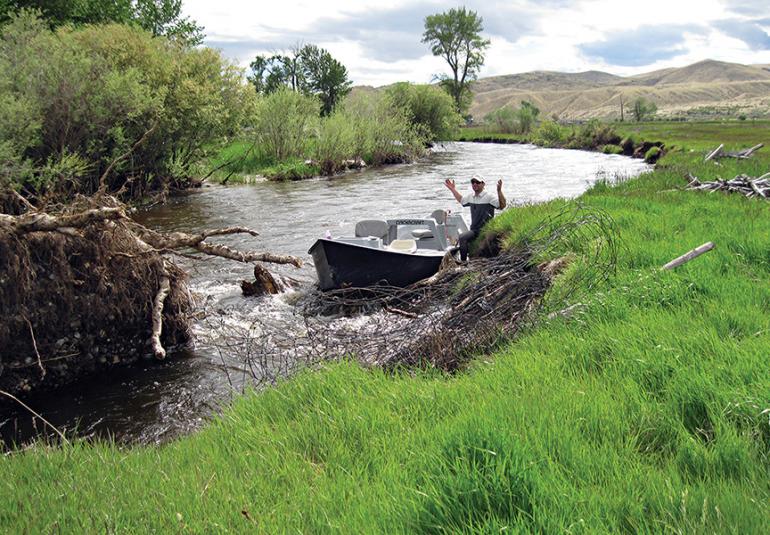Access Granted
Montana's most egalitarian law.
Whether it’s fly fishing one of the state’s blue-ribbon trout streams, kayaking or canoeing its clear waters, or just floating a lazy stretch of river with friends, Montana’s stream-access laws are the envy of the nation.
But it hasn’t always been this way. The benefits we enjoy today stem from the tireless work of those who began fighting for better public stream and river access in the late 1970s. This group of dedicated citizens left the legacy of the most egalitarian stream-access law in the country.
MCSA vs. Curran
Claiming ownership of the banks and streambed—and thus the right to restrict public access—Dennis Curran and his Curran Oil Company harassed and interfered with fishermen and floaters on the Dearborn River in the late 1970s. Members of what would become the Montana Coalition for Stream Access (MCSA) filed suit against Curran in 1977, and the case wound up in the Montana Supreme Court in 1984. Perhaps the most crucial concept to emerge from the court’s decision was a broad definition of navigability of state waters: “any surface waters capable of use for recreational purposes are available for such purposes by the public…” Further, the court ruled that anyone may use the stream up to the normal high-water mark for recreational purposes, and that he or she also has the right to portage around stream barriers in the least intrusive manner.
MCSA vs. Hildreth
The second case to lay the framework for the state’s stream-access legislation dealt with the Beaverhead River. Along its 69-mile length, the Beaverhead passed through about 1.5 miles of land owned by Lowell Hildreth. In 1981, fishermen alleged that Hildreth installed a fence blocking access to the river from the bridge and planned to install a cable across the river to block floaters on the opening day of fishing season. A few weeks after ruling on Curran in 1984, the court ruled on Hildreth, its companion case. Their reasoning upheld the Curran case, and the justices advised that determining “navigability for title is not necessary or proper when the issue is one of navigability for use.” In short, if the stream is navigable for recreational purposes, it can be used up to the high-water mark without regard to ownership of surrounding lands. Within months of the historic Curran and Hildreth decisions, nine bills concerning stream access were introduced in the 1985 Montana Legislature. Developing legislation to codify the court’s reasoning into law was crucial.
A diverse group of legislators, landowners, stockmen, farmers, recreationalists, hunters, and anglers worked together to develop House Bill 265. That bill, notable for its bipartisan support, eventually became the treasured “Stream Access Law” that Montanans continue to enjoy. The law distilled the court’s reasoning, based on the Montana Constitution and the public trust doctrine, into the West’s strongest law protecting public access. In the most basic sense, the Stream Access Law allows full public use of most perennially flowing waterways between the ordinary high-water marks. If a stream is capable of being used for recreation, it can be so used regardless of underlying streambed ownership. Recreationalists cannot cross private land to enter the river, but once in the river, they can fish, float, and wade to their heart’s content.
This article is adapted from a complete history (including citations) published on the Public Land/Water Access Association website (plwa.org).











